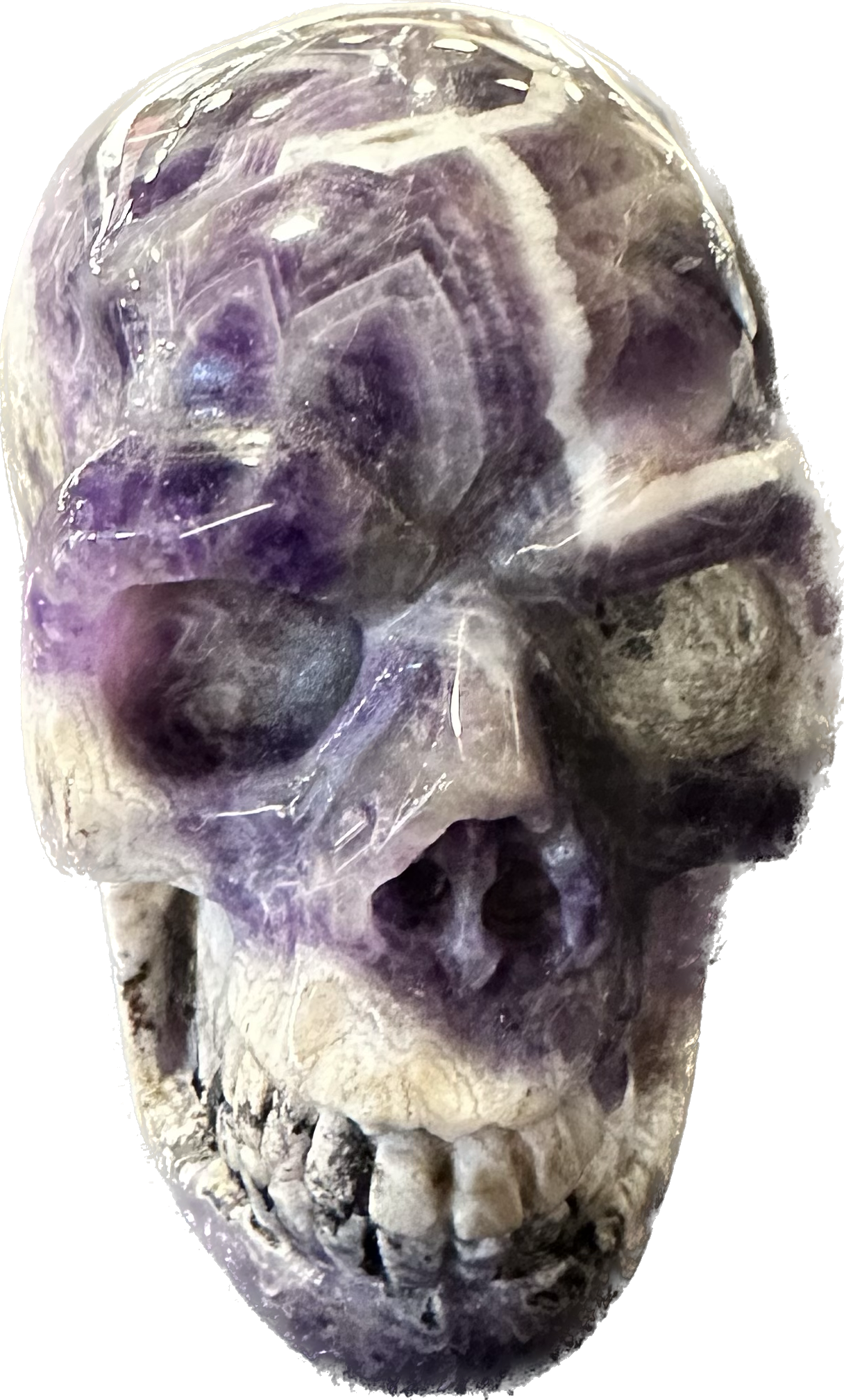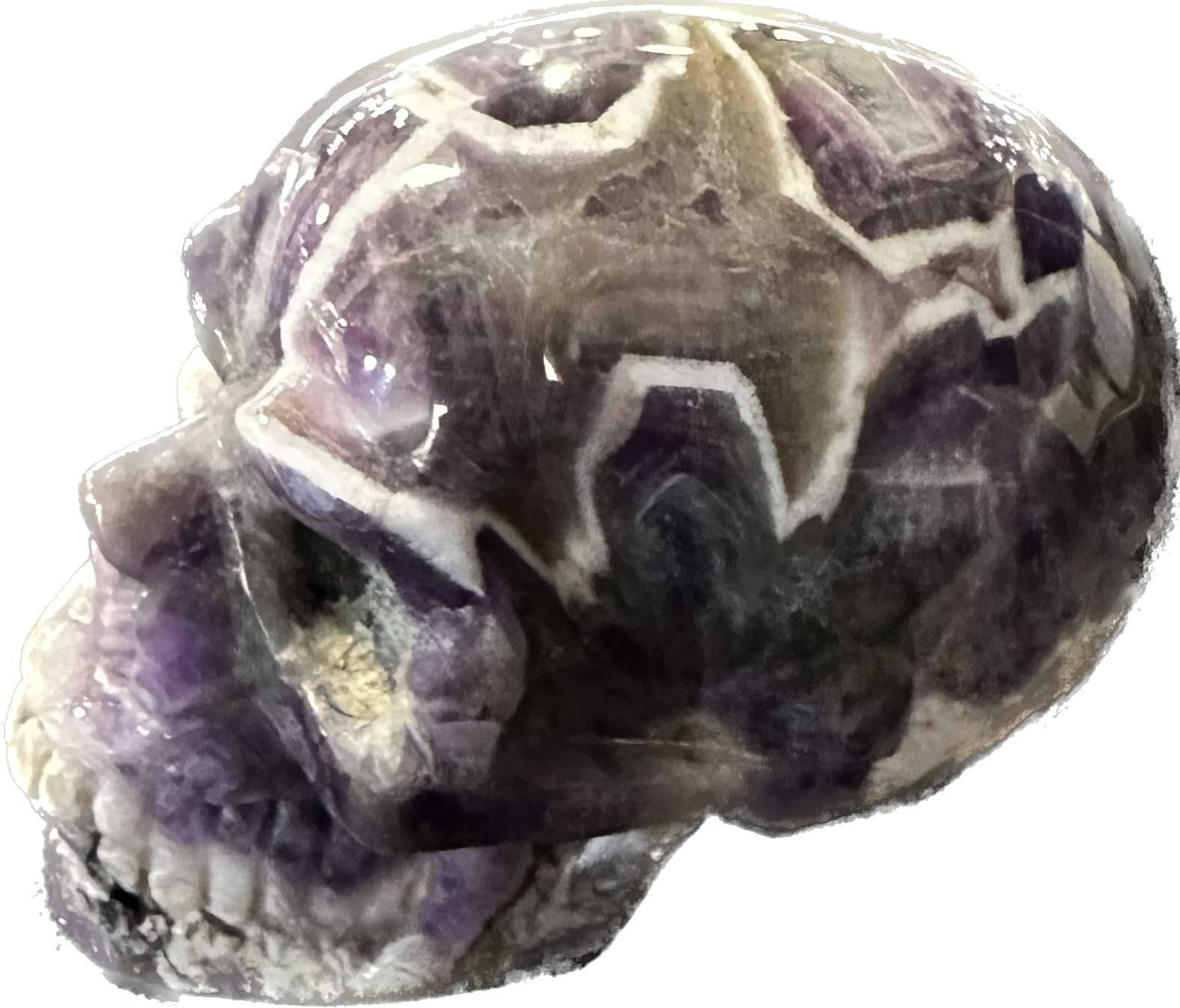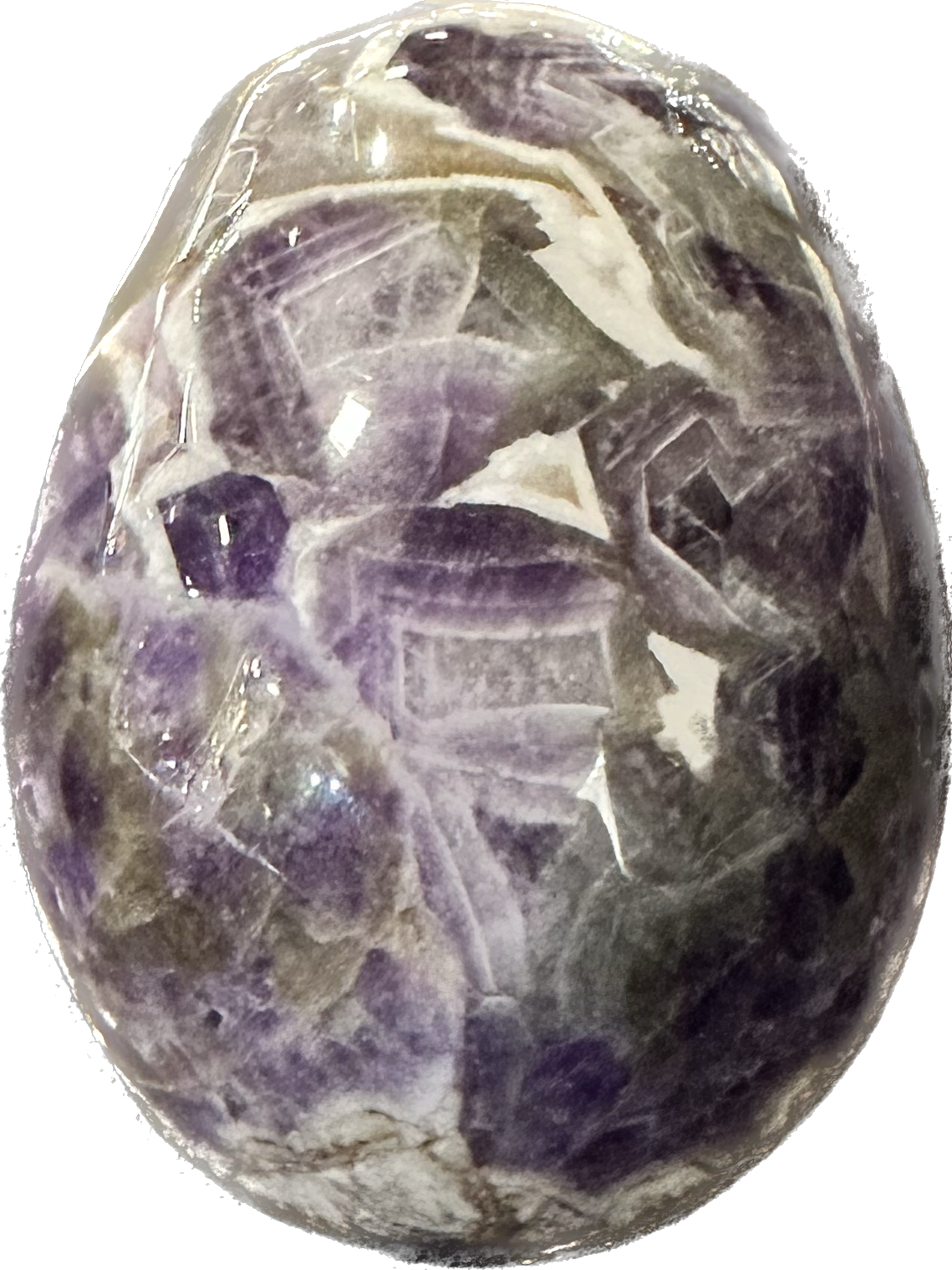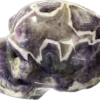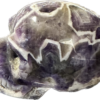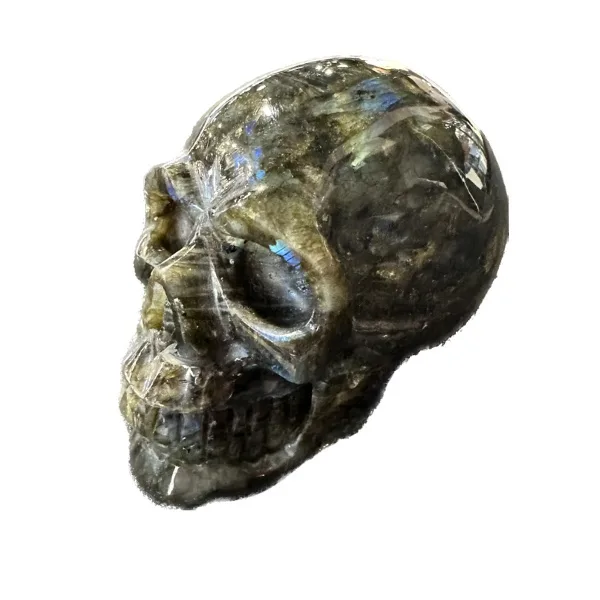Amethyst skull, hand finished, AA quality
Amethyst, a captivating and historically rich gemstone, is the violet variety of quartz, renowned for its stunning purple hue which ranges from light lavender to deep violet. Its name derives from the ancient Greek word “amethystos,” meaning “not intoxicated,” reflecting the belief that the stone could prevent drunkenness. This gemstone has been highly prized across different cultures and eras for its beauty, symbolism, and purported mystical properties.
Chemically, amethyst is composed of silicon dioxide (SiO2), the same mineral that constitutes other varieties of quartz. The purple color of amethyst arises from irradiation, iron impurities, and in some cases, the presence of other trace elements. Heating amethyst can transform its color, often turning it into citrine, a yellow to orange variety of quartz. Natural and synthetic processes can create amethyst, but the natural version remains more valued in jewelry and ornamentation.

The history of amethyst is steeped in myth and legend. In ancient Greece and Rome, amethyst was associated with Bacchus, the god of wine. Legend has it that Bacchus, angered by an insult, decreed that the first person he met would be devoured by his tigers. This unfortunate person was Amethyst, a young maiden on her way to worship at the shrine of Diana. To protect her, Diana transformed her into a clear, white crystal. In remorse, Bacchus poured his wine over the crystal, staining it purple. This myth underscores the belief that amethyst could prevent intoxication.
Amethyst was also highly valued in ancient Egypt, where it was used in jewelry and amulets. The Egyptians believed that amethyst had protective properties and could guard against harmful spells and witchcraft. In medieval Europe, amethyst was a symbol of royalty and was often used to decorate the regalia of kings and queens. It was also associated with the Christian church, symbolizing piety, humility, and spiritual wisdom. Bishops often wore amethyst rings, and the stone featured prominently in religious artifacts.
In addition to its historical and cultural significance, amethyst is believed to possess a variety of metaphysical properties. It is often associated with the crown chakra, which is the energy center located at the top of the head, linked to higher states of consciousness and spiritual awareness. Practitioners of crystal healing and New Age spirituality use amethyst to enhance meditation, promote emotional balance, and protect against negative energies. It is said to have calming properties, helping to soothe the mind and reduce stress.
The geographical distribution of amethyst spans across the globe, with significant deposits found in countries such as Brazil, Uruguay, Russia, South Korea, and Zambia. Brazil is one of the largest producers of amethyst, particularly from the Rio Grande do Sul region. The stones from this area are renowned for their deep purple color and large crystal sizes. Uruguay also produces high-quality amethyst, often characterized by a deep, rich purple with red flashes. Zambian amethyst is known for its clarity and bluish undertones, adding to its unique appeal.
Amethyst forms in geodes, which are hollow, spherical rocks lined with crystals. These geodes can vary significantly in size, with some being small enough to hold in your hand, while others can be several feet in diameter. The crystals inside a geode grow in a radial pattern from the outer shell toward the center, creating a stunning display when the geode is cut open. The best-quality amethyst crystals are usually found in the central part of the geode, where conditions were most favorable for crystal growth.
The mining and processing of amethyst involve several steps. Initially, miners extract the geodes from the earth, often using dynamite or other tools to break the surrounding rock. Once the geodes are collected, they are carefully cut open to reveal the crystals inside. The amethyst crystals are then cleaned, sorted, and graded based on their color, clarity, and size. High-quality stones are often cut and polished for use in jewelry, while lower-grade stones may be used for decorative purposes or in industrial applications.
In jewelry, amethyst is a versatile gemstone that complements a variety of metals and settings. It is often set in silver, white gold, or platinum to highlight its cool tones, but it can also look stunning in yellow or rose gold. Amethyst is used in rings, earrings, necklaces, bracelets, and brooches, either as the central stone or as an accent. Its relative hardness of 7 on the Mohs scale makes it durable enough for everyday wear, though it should still be handled with care to avoid scratches and chips.
Amethyst’s appeal extends beyond personal adornment. It is often used in decorative objects such as vases, bookends, and ornamental carvings. Large, polished geodes and clusters of amethyst crystals are popular in interior design, bringing a touch of natural beauty and elegance to living spaces. These pieces are not only visually striking but also believed to impart calming and balancing energies to the environment.
The synthetic production of amethyst has become more common with advances in technology. Synthetic amethyst is created in laboratories using processes that replicate the natural conditions under which amethyst forms. These man-made stones have the same chemical and physical properties as natural amethyst, making them indistinguishable to the naked eye. However, gemologists can often identify synthetic amethyst through various tests, including examining inclusions, growth patterns, and spectral analysis. While synthetic amethyst is generally less expensive than natural stones, it provides an affordable alternative for those who appreciate the beauty of amethyst without the higher cost.
The value of amethyst is determined by several factors, including color, clarity, cut, and size. The most prized amethyst stones exhibit a deep, rich purple with minimal inclusions and excellent transparency. Stones with secondary hues of red or blue are also highly valued. The cut of the stone can enhance its color and brilliance, with well-cut stones commanding higher prices. While smaller amethyst stones are relatively common and affordable, larger stones of high quality can be quite valuable.
Throughout history, amethyst has been a symbol of power, protection, and spiritual wisdom. Its enduring popularity is a testament to its captivating beauty and the myriad of meanings and uses attributed to it. Whether worn as a piece of jewelry, used in meditation, or admired as a natural specimen, amethyst continues to fascinate and inspire people around the world. Its journey from the depths of the earth to the hands of artisans and collectors highlights the intersection of natural wonder and human creativity, making amethyst a truly remarkable gemstone.
Prehistoric 101 (Learn about fossils, minerals, and meteorites)
Amethyst: Learn More
Mystical Purple: Discovering Amethyst
Discovering Prehistoric Life and Fossils




